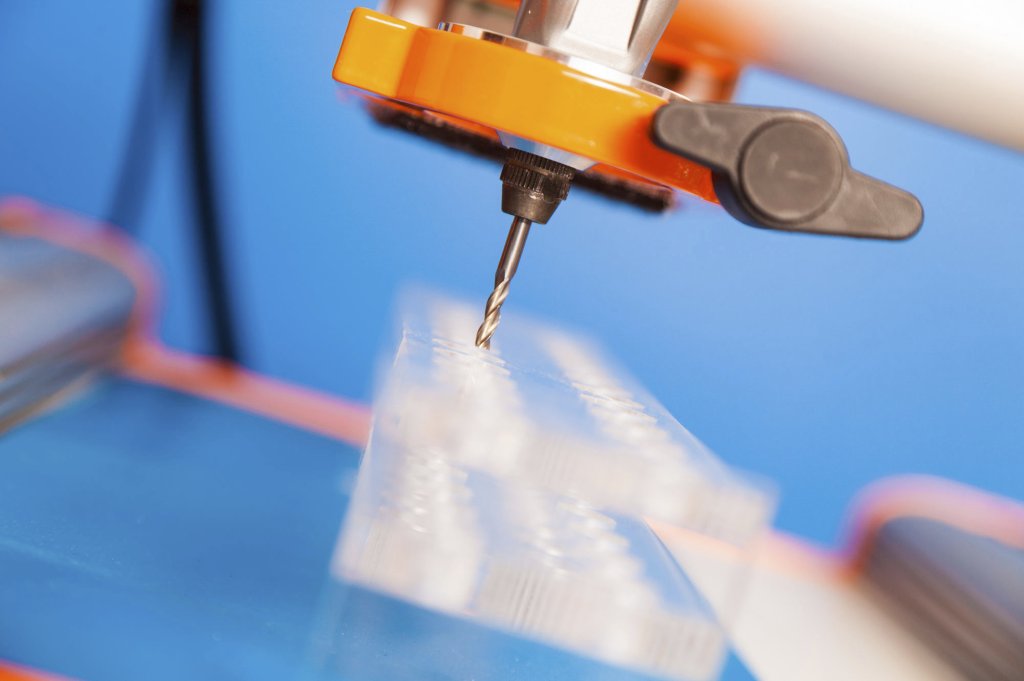Best Uses for Fabricated Plastic
Fabricated plastic components show up in a large number of manufacturing sectors. Plastics make an excellent choice for industries and applications that require parts to meet precise dimensions because they are simple to mold, bend, cut, and otherwise manipulate into custom forms and sizes.
Although this practical advantage can be applied to nearly any industry, fabricated plastics are particularly useful for manufacturing industrial equipment, wear parts for machinery or mechanical setups and medical device components.
Here are some ways plastics deliver specific advantages to these industries and others.
Plastic Fabricated Components for Industrial Wear Applications and Manufacturing
Fabricated plastic pieces are frequently used in industrial facilities to safeguard machinery parts and streamline crucial procedures. The list of possible uses is relatively long due to the wide variety of readily available plastics and their ability to be molded, sculpted, and cut into countless forms and sizes.
For instance, almost every manufacturing facility uses bearings and bushings. In addition to offering various metal components the necessary cushioning, these small-looking worn parts can also lower the maintenance required to keep equipment in good working order and avoid downtime that ultimately costs facilities money.
Manufacturers require high-quality engineered plastics for these applications, such as UHMW, acetal, and PEEK, which can surpass metal bearings and bushings in usefulness due to their lightweight, chemical, and friction resistance.
Plastic gears can also offer more value compared to metal. Plastic gives design versatility since it can be molded to fit various machine needs. They don’t require additional lubrication but can be blended with additives to boost performance. In addition, plastics offer chemical and corrosion resistance, outperforming metal gears in wet situations, and they’re lighter and better at absorbing noise and impact.
All of this helps machinery run more quietly and more efficiently.
For conveyor equipment, plastics appear in machinery that moves bottles, boxes, and other products. Many machines use plastic wear strips along their guardrails to protect merchandise and machinery. In addition, smooth plastic components attached to each machine help items slide through the factory. Plastic surpasses metal in these cases because it’s more flexible and prevents glass bottles from breaking. This can speed up processing and reduce downtime.
Fabricated Components for the Medical Field
Fabricated plastic components can be found in implants, prostheses, surgical tools, trays, packaging, and other support materials used in clinics and hospitals.
Plastics are lightweight, resistant to heat and chemicals, and comply with many of the industry’s strictest standards, including FDA and USP testing processes. In particular, most plastics can be sterilized using steam, high heat, or chemical treatments. To guarantee patient safety, some plastics, such as those utilized in implanted devices, are designed to meet strict biocompatibility criteria.
Plastics are widely used in this industry since they can be easily customized and are lightweight and comfortable for patients. They can also replicate natural parts better than metal.
Among the plastics frequently used in orthotics and prosthetics manufacture are UHMW, HDPE, LDPE, and polypropylene. These can be customized to each patient’s shape and size. For example, a brace that protects and supports a child’s legs as they grow must fit them correctly as they grow. And as patients rehabilitate and their needs change, so may their prostheses.
Plastic can be used to make medical tools and sterilization trays. Plastics like polyetherimide, polycarbonate, and polypropylene are strong, durable, and suitable for sterilization processes. However, many sterilization trays must undergo high-temperature treatments like steam cleaning, while others are sterilized chemically.
Another frequent use of plastic materials is in medical packaging. In certain instances, maintaining a complete protection from contamination is essential. Materials must therefore be sturdy, long-lasting, and properly fit for the materials they are intended to protect. Depending on the product, some will need to be packaged in clamshells or lidding, while others can be placed in blister packs or folding cartons. Certain medical production and packaging facilities may utilize several materials and solutions to accommodate an entire line of products.
What Are the Processes for Fabricating Plastics?
Plastics are remarkably flexible materials that can be shaped and molded into various shapes. The optimum manufacturing technique for a particular plastic product or component depends on several factors, including the material, the component geometry, the required tolerances, and the quantity to be produced.
Here are some of the most common processes used:
- Plastic Intrusion – A hopper holds powder or pellets while a screw drives molten plastic through a cooled metal die to form and cut it while maintaining its shape.
- Injection Molding – A hopper loads plastic polymer into a heated barrel and screw. The screw melts plastic and injects it into a temperature-controlled split mold.
- Extrusion and Injection Blow Molding – Like extrusion and injection molding, air pressure expands hollow plastic, leaving the inside hollow.
- Thermoforming – This process involves heating extruded plastic sheet to an adjustable temperature, stretching it over a mold, and trimming it.
- Compression Molding – Preheated raw material goes into a closed mold. Under heat and pressure, the material is forced into the mold and solidified.
- Plastic Rotational Molding – This method makes hollow plastic products. Molds are spun in a furnace to coat them evenly with plastic polymer. Melted plastic conforms to the mold hole, leaving the inside hollow. As the polymer cools, the mold is removed.
- Vacuum Casting – This low-volume process creates practical plastic prototypes. Vacuums draw polyurethane resins or cast nylon into a mold. The mold is removed, the casting is baked, and then removed from heat.
Fabricated Plastics at Piedmont
Piedmont Plastics provides plastic materials that can be used for practically any manufacturing application. Our knowledgeable staff can help you find a suitable material solution, regardless of application. Contact us today to find the best material for your next project.
